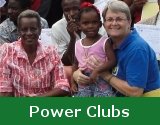 |
Contact usPowerPlay Centres
Youth Ministry
A.B.C.DA.B.C.D TrusteesA.B.C.D DirectorsAfrica PowerClubsMoringa |
home >>powerplay
center >>hiv/aids in Malawi
HIV/AIDS in Malawi Information sourced from wikipedia.org In 2005, approximately 14.1 percent of the adult population ages 15 to 49 in Malawi was living with HIV/AIDS. With one of the highest adult prevalence rates in the world, the epidemic has exacerbated social problems as diverse as food security, human resource capacity and national defense. In Malawi, women are disproportionately affected by the epidemic. In 2005, approximately 500,000 women 15 years and older were living with HIV/AIDS. The primary mode of HIV transmission is unprotected heterosexual sex. Mother-to-child HIV transmission is the second major mode of HIV transmission, accounting for approximately 83,000 pediatric HIV infections in 2005. HIV prevalence in Malawi is significantly higher in urban areas (20.4 percent) than in semi-urban (17.0 percent) and rural areas (13.0 percent). However, there is evidence that while infection rates are slowing in urban areas, HIV prevalence continues to increase in rural areas. The Southern region of Malawi is the most densely populated and has the highest prevalence rate among pregnant women, 21.7 percent. The Northern and Central regions have prevalence rates among pregnant women of 14.0 percent and 14.3 percent respectively. The scope of the HIV/AIDS epidemic in Malawi presents many challenges to treatment. One of the greatest challenges is building the capacity of Malawi’s health care system – especially in the rural areas – to cope with the enormous needs of the people. Other serious constraints include: the severe lack of trained health care professionals and para-professionals; limited access to health services, especially in rural areas and among the poor; an inefficient supply chain for drugs and other supplies; inadequate physical infrastructure; and limited laboratory capacity. These critical barriers make it particularly difficult to provide treatment and care. The high levels of HIV infection have resulted in an unprecedented increase in the number of tuberculosis cases, which rose to over 27,000 cases annually in recent years. The disease burden is also exacerbated by endemic malaria, which affects up to four million people annually, the majority of whom are women and children. Harmful effects experienced by children and women as a result of AIDS • Fragmented households • Increased child labour • Property dispossession • Child headed households • Elderly headed households, usually grandmother. • Increase prostitution, child marriage and pornography • Increase in children in conflict with the law • Instituionalised children |
| Copyright © 2022 www.UnitedCaribbean.com. All rights reserved. Disclaimer Click to Contact us |





